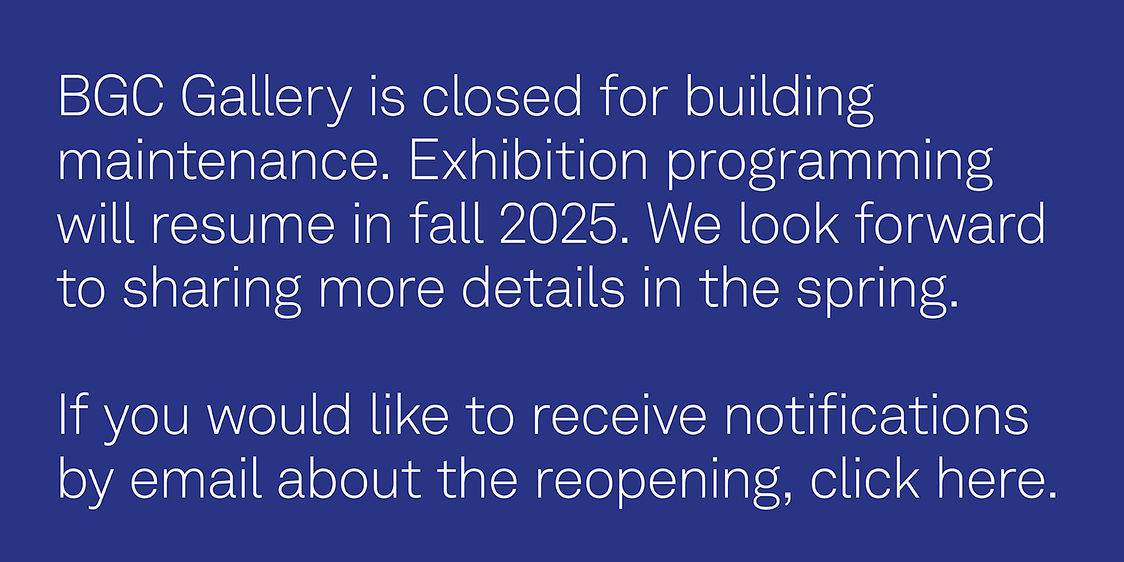Roisin Inglesby (MA 2012) is an assistant curator at the Victoria and Albert Museum in London, where she works in the designs section of the Word and Image department. Her most recent project was the re-hang of the Photographs Gallery, which showcases a history of photography from 1839 to the 1960s.
Since graduating from the BGC you have returned to England and taken the position of assistant curator at the Victoria and Albert Museum. What are some projects you have been working on?
I joined the V&A in May 2011 as part of their assistant curator development program, and was immediately placed on a year’s secondment to the Furniture, Textiles and Fashion department to work on their Clothworkers’ Centre project. I helped plan a new storage facility for all of the V&A’s textile and dress objects, a huge logistical challenge, which involved working with architects to design the best storage for 100,000 objects, ranging from Renaissance tapestries to punk boots. I was also heavily involved with physically packing up objects to take to the new site and installing them upon arrival, which was a brilliant opportunity to have hands-on experience with a wide variety of objects. In June last year I moved to the designs section of the Word and Image department, where I am involved in all aspects of the team’s activities, such as acquisitions, cataloguing, research, and teaching sessions for students. I was also assistant curator of a display in the newly-reopened Photographs Gallery, which chronicles a history of photography from 1839 up to the 1960s. Finally, an unexpected perk of the job is the opportunity to go on courier trips, and last year I was lucky enough to go to the Morgan Library with some Beatrix Potter drawings, and to pick up an Edward Burne Jones painting from Japan.
Your focus at the BGC was antiquarianism in the English Renaissance. Have you had opportunities to work with that material lately and/or have you encountered anything new that has enhanced your knowledge in this area?
Not directly, though this doesn’t mean I’ve stopped thinking about it! My interest in early modern antiquarianism stemmed from a desire to understand how objects work to create a sense of history, and this curiosity about how history is transmitted and perceived continues to inform a lot of my work. For instance, while selecting objects for the Photographs Gallery, I was interested to note how antiquarian concerns in early documentary photography echo the county surveys of the Renaissance topographer historians. Similarly, at a fund-raiser for the Clothworkers’ project I gave a little ‘show-and-tell’ on a fragment of a Sheldon tapestry map, a completely different example of how a sixteenth century patron gave physical form to the historical landscape. My job constantly gives me opportunities to make connections between ideas I’ve studied and their material manifestations, and I’ve enjoyed both learning about completely new types of objects and finding familiar ideas in unexpected places. I wanted some experience in a curatorial job specifically to learn how to put into practice some of the knowledge I had acquired at the BGC, and so while my everyday work is not centered on early modern history, developing understanding about learning from objects is implicit in everything I do.
What are your future plans, either projects at work or personal research you hope to undertake?
I’m planning to speak at the Renaissance Society of America’s Annual Conference in April, focusing on a seventeenth-century domestic embroidery recently discovered in the V&A’s collection. It has very unusual iconography of Mary Magdalene, which I’m using as the focal point for a paper about the concept of the feminine ideal in the study of women’s material culture. I’m also putting together a proposal to curate a small display about the use of historical themes in design. Really though, since I’d never worked in a museum (aside from some shifts in the BGC gallery) before starting at the V&A, my future plans involve continuing to learn as much as possible about all aspects of curatorial work.














